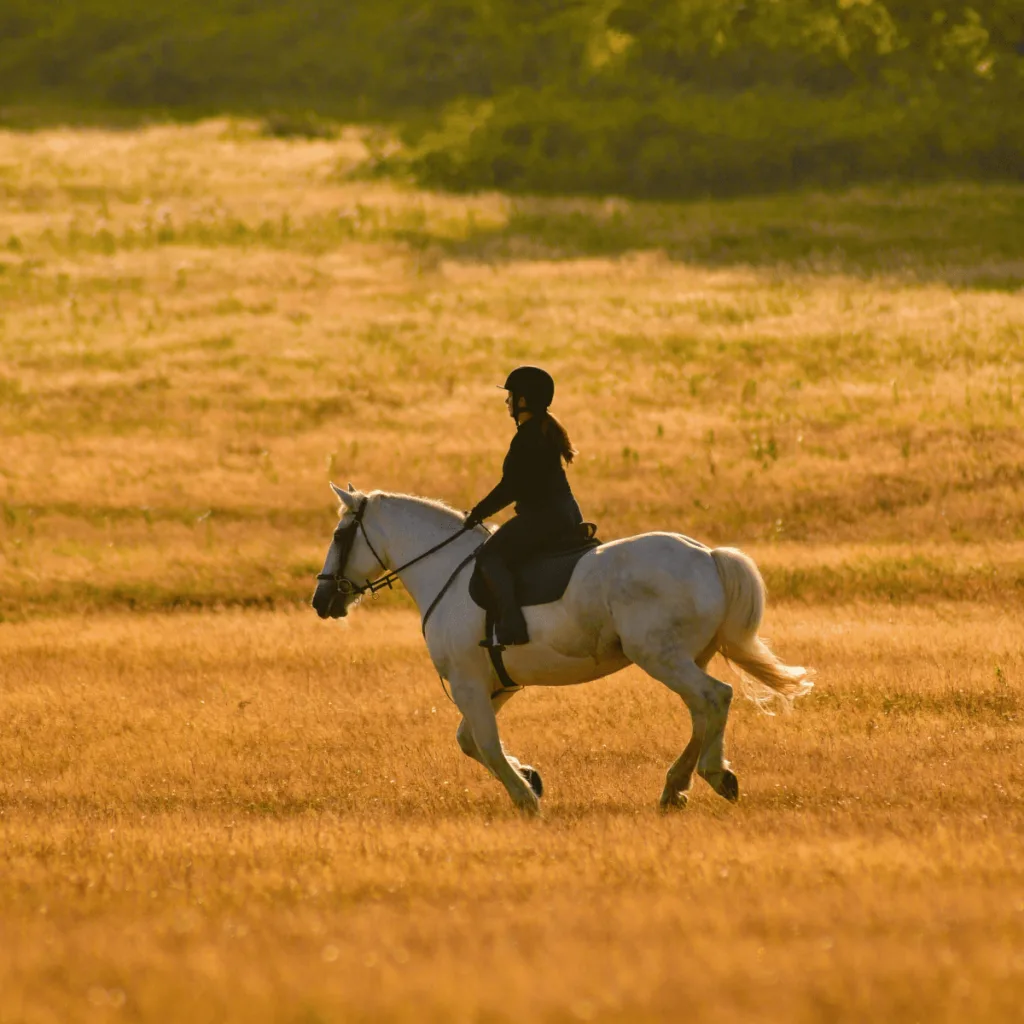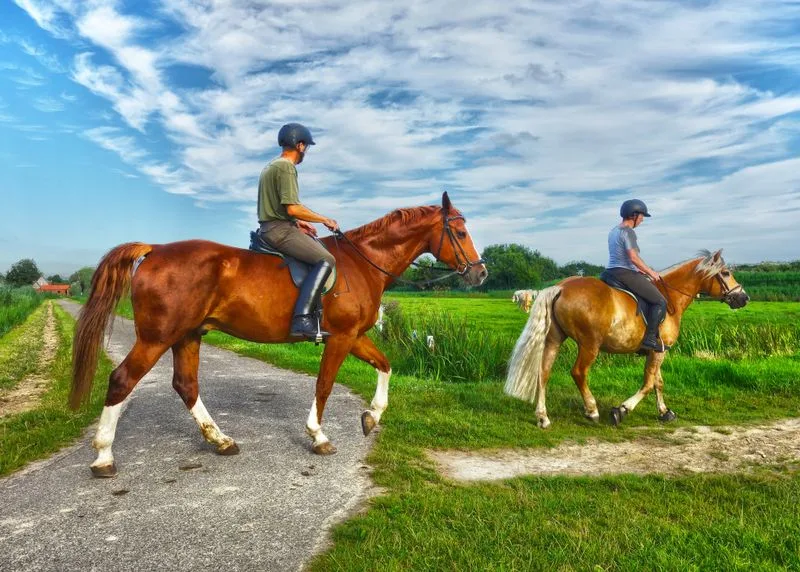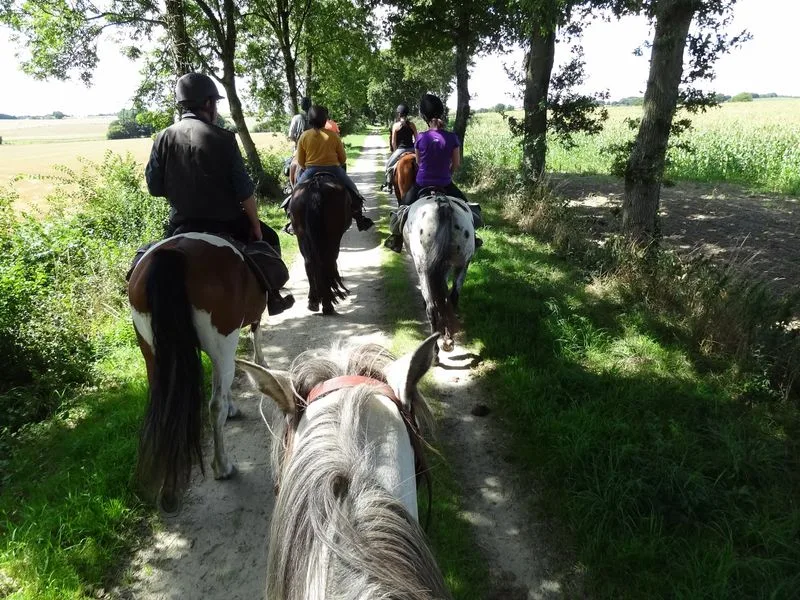Trail riding is one of the most rewarding experiences for equestrians.
It combines the thrill of being outdoors with the joy of bonding with your horse. Whether you’re a seasoned rider or just starting, trail rides can be a perfect opportunity to practice essential horsemanship skills. While the beautiful scenery and fresh air are enough to make a trail ride enjoyable, it’s also a great time to enhance your riding abilities.
Here are four essential things to focus on while trail riding to help improve your riding technique, bond with your horse, and stay safe on the trail.
1. Improve Your Seat and Posture
Your seat and posture are the foundation of your riding. The more comfortable and balanced you are in the saddle, the more effectively you’ll communicate with your horse. While trail riding, it’s easy to get relaxed, which is wonderful, but you should still be mindful of your body position.
Key Points to Focus On:
- Sit tall: Make sure you’re not slouching or leaning forward. Keep your spine straight, shoulders back, and hips aligned with your heels. A tall posture helps with balance and ensures you’re ready to react if your horse needs guidance.
- Stay relaxed: Tension can affect your horse’s behavior and your balance. Make sure your shoulders, arms, and legs stay relaxed, allowing your horse to move freely without restriction.
- Engage your core: Your core muscles are your most important asset when it comes to maintaining a strong seat. Gently engage your core muscles to help keep you balanced, especially when the trail gets bumpy.
- Slight bend in the knee: Keep a gentle bend in your knees for better shock absorption and to prevent bouncing out of the saddle. This helps you remain connected to your horse and feel their movements.
By practicing these aspects while trail riding, you can improve your seat and posture, making you a more effective rider and enhancing your overall experience.
2. Develop Your Balance and Leg Aids
Balance and the ability to use your legs effectively are vital aspects of riding, especially on a trail. Horses often encounter uneven terrain, rocks, and obstacles that can make the ride more challenging. Having proper balance and the ability to use your legs effectively will help you maintain control and feel more secure while riding through difficult terrain.
Balance:
- Use your seat to stay balanced: A stable seat helps you stay connected to your horse and react to sudden shifts in movement. Practice balancing while the horse moves over different terrain, from smooth paths to bumpy trails.
- Stay with the horse’s motion: As your horse moves, make sure you are moving with them. Practice following their rhythm and learning to absorb the motion of the gait. This will help you stay centered in the saddle and prevent you from being jolted.
Leg Aids:
- Light leg pressure: On the trail, use light, consistent pressure with your legs to guide your horse. For instance, if you’re riding in a narrow path, use your leg to gently encourage your horse to stay on course.
- Stay soft with your heels: While you use your legs for control, avoid digging your heels into the horse’s sides. Use your calves instead for more subtle, effective cues. This promotes a better partnership with your horse and reduces the chance of startling them.
Trail riding provides the perfect environment to practice your balance, which will translate into more confidence and control when you return to the arena. By becoming more skilled at using your legs and staying balanced, you’ll be able to handle more difficult or unpredictable trail conditions.
3. Master Transitions Between Gaits
Mastering transitions between gaits (walk, trot, canter) is essential for any rider, and trail riding offers numerous opportunities to practice these transitions in a more natural setting. While out on a trail, you’ll often need to switch gaits to navigate different terrains, so it’s crucial to stay in control of your horse’s speed and movements.
Key Things to Practice:
- Slow down before you transition: One of the biggest challenges during transitions is slowing your horse down smoothly. Whether you’re asking your horse to transition from a trot to a walk or from a canter to a trot, always make sure to decrease your speed gently before requesting a change of gait. This will help avoid abrupt transitions that might unbalance you or your horse.
- Use clear cues: Whether you’re riding on a trail or in the arena, your cues should always be clear and consistent. Practice giving precise aids for upward and downward transitions, such as using your seat to sit deeper for a downward transition or shifting your weight forward for an upward transition.
- Be aware of the terrain: When trail riding, always consider the terrain when transitioning between gaits. It might not always be safe or comfortable to canter on a narrow or rocky path. Evaluate the trail ahead and decide on the best gait for the conditions.
By practicing smooth, well-timed transitions while trail riding, you’ll increase your riding fluidity and your ability to communicate more clearly with your horse. This will make your trail rides more enjoyable and safer for both you and your horse.
4. Sharpen Your Awareness of Surroundings and Trail Safety
While it’s easy to get lost in the beauty of nature on a trail ride, it’s essential to remain aware of your surroundings at all times. Awareness of your environment and maintaining safety habits are key to a smooth and enjoyable ride, especially on unfamiliar trails.
Key Safety Practices:
- Watch for obstacles: Keep an eye out for any potential hazards, such as fallen trees, rocks, or uneven terrain. Always look ahead and be ready to steer your horse to avoid obstacles.
- Trail etiquette: Be courteous to other trail riders and hikers. Always announce your presence when approaching other riders or people on foot. If you’re on a narrow trail, give others the right of way when possible.
- Know the trail: Familiarize yourself with the trail before setting out, especially if you’re on a new route. Understand the terrain, the length of the ride, and any potential hazards, like water crossings or steep inclines.
- Ride at a controlled pace: Be mindful of your horse’s fitness and your own. Riding too fast can cause accidents, especially if your horse is not prepared for sudden bursts of speed. Maintain a pace that’s comfortable for both of you, and always be cautious when riding downhill.
By staying aware of your surroundings, being prepared for changes in the terrain, and following proper trail etiquette, you’ll be safer on the trail and able to enjoy your ride more fully.
Trail riding is an enjoyable and enriching experience that allows you to practice and improve various aspects of your riding. By focusing on improving your seat and posture, refining your balance and leg aids, mastering transitions between gaits, and staying aware of your surroundings, you’ll not only become a better rider but also build a stronger connection with your horse. These skills will help you navigate the trails with greater confidence and make each ride a more fulfilling adventure.
Remember, practice makes perfect. So, get out there, explore new trails, and keep working on these fundamental skills! Happy riding!




